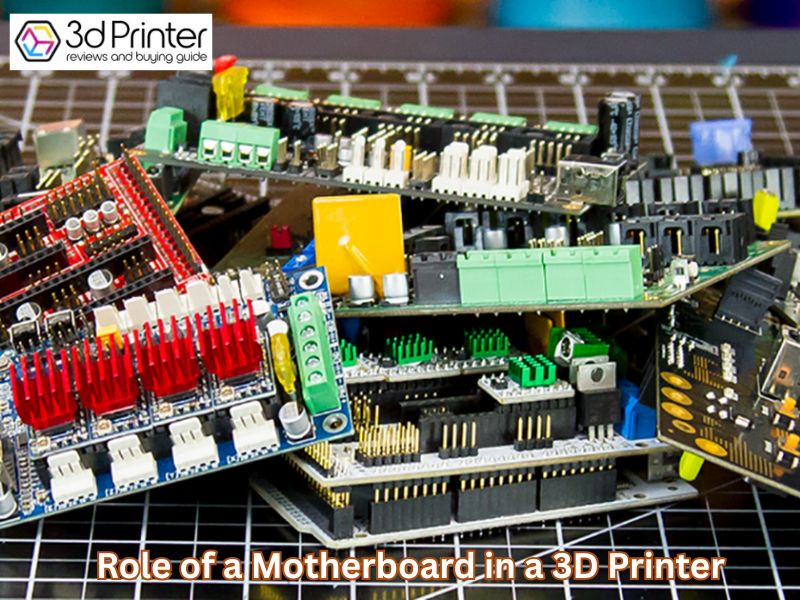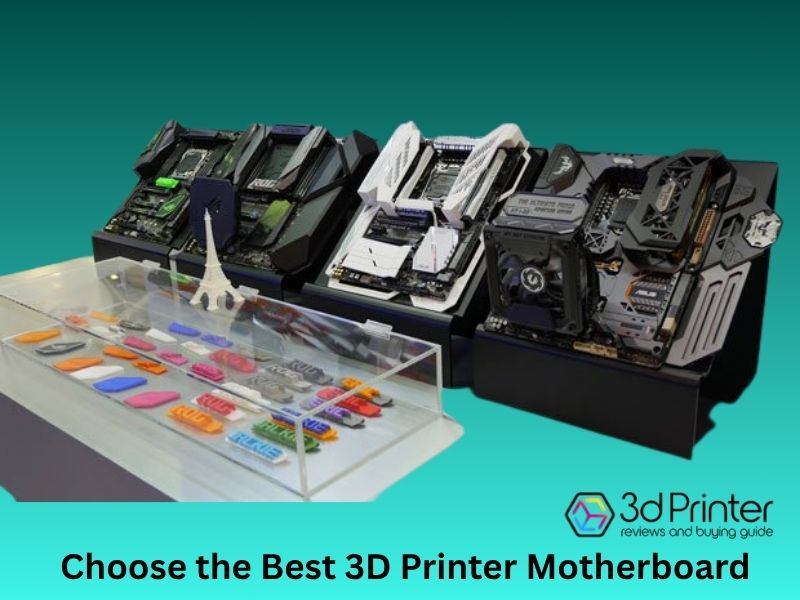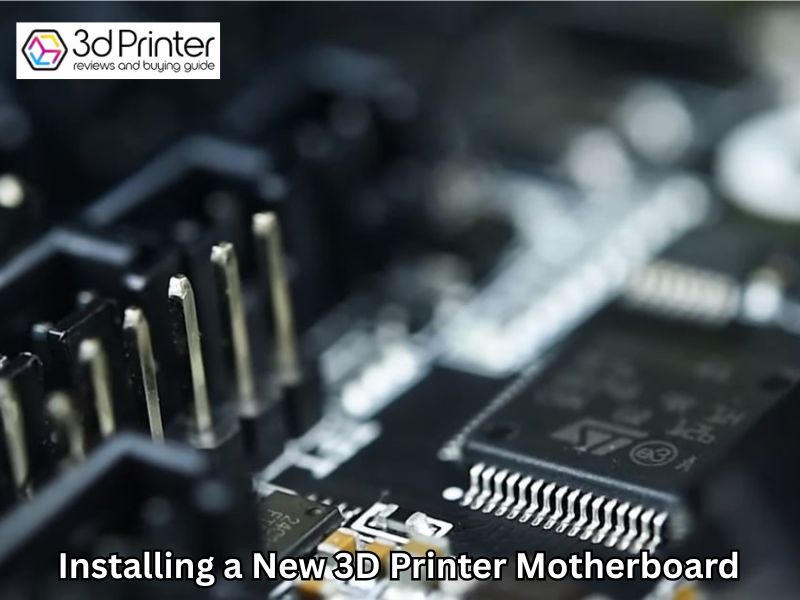Introduction
If you want faster, smoother, and more reliable 3D prints, upgrading your 3D printer motherboards is a smart move. The motherboard controls everything—from motor movements to temperature regulation—so a better one means better results. For quiet and efficient printing, the SKR Mini E3 V3.0 is a solid choice.
Need more advanced features? The Duet 2 Wi-Fi offers powerful performance with remote access. DIY builders love the SKR 3 for its speed and flexibility. If you own a Creality printer, the V4.2.7 board installs easily and boosts stability.
For even faster prints, many users pair these boards with Klipper firmware. No matter your setup, choosing the correct motherboard can seriously improve print quality, reduce errors, and save time.
Discover top 3D printer motherboards for better speed, precision, and reliability. Find the best options to upgrade your 3D printing setup.
Related internal pages:
- best-3d-printer-for-beginners-2/
- ultimaker-s8-3d-printer/
- cr30-printer/
- 3d-printer-for-miniatures/
- anycubic-kobra-3-v2/

What Is a 3D Printer Motherboard and Why It Matter for Print Quality and Speed
Understanding the Role of a Motherboard in a 3D Printer
A 3D printer motherboard is the core controller of the entire machine. It tells every component—like stepper motors, heaters, fans, and sensors—what to do and when. From guiding the nozzle’s movement to keeping temperatures stable, the motherboard ensures everything runs smoothly.
Think of it as the brain of the printer. Without it, your printer can’t read files, move accurately, or respond to changes during printing. A well-built motherboard improves precision, reduces errors, and helps create cleaner, faster prints. If you’re running a small business, choosing the best 3d printer for small business means investing in a reliable motherboard that ensures consistent, high-quality results every time.
Key Features That Make a Motherboard Fast and Reliable
1. Fast Processing Power
Modern 32-bit motherboards process data much faster than older 8-bit boards. That speed allows for smoother motion, higher print quality, and support for advanced features like input shaping.
2. High-Quality Stepper Drivers and Heat Protection
Good motherboards come with silent stepper drivers for smooth, quiet movement. They also have built-in thermal protection to prevent overheating during long or fast prints.
3. Firmware Compatibility and Upgrade Support
Support for open-source firmware like Marlin or Klipper gives you more control and flexibility. Boards that allow firmware upgrades are easier to tweak and keep up to date as your needs grow.
Top 7 Best 3D Printer Motherboards for Fast and Reliable Performance
1. BigTreeTech SKR Mini E3 V3.0 – Quiet and Efficient Upgrade for Ender 3
The SKR Mini E3 V3.0 is a popular choice for upgrading Ender 3 printers. It features silent stepper drivers that minimize noise while maintaining smooth and precise movements. As one of the most reliable 3d printer motherboards, it supports the widely used Marlin firmware, making it a flexible and efficient option for hobbyists and pros alike.
2. Duet 2 WiFi – Premium Board with Powerful Wireless Control
If you want advanced features and easy remote access, the Duet 2 WiFi is a solid pick. It runs on a fast 32-bit processor and includes a user-friendly web interface. Perfect for custom or complex printer builds, it’s one of the most powerful 3D printer motherboards available, letting you control and monitor your printer from anywhere on your network.
3. MKS Gen L V2.1 – Reliable and Affordable Choice for Most Printers
The MKS Gen L V2.1 is excellent for those on a budget who still want dependable performance. It’s compatible with many popular 3D printers and offers steady, reliable control. This board is a favorite among beginners and those upgrading older machines without spending much. Among affordable 3D printer motherboards, it stands out for its balance of cost and functionality.
4. Creality 4.2.7 Board – Plug-and-Play Upgrade for Creality Users
For Creality printer owners, the 4.2.7 board is an easy upgrade with silent drivers built in. It comes pre-installed on newer Ender models, so installation is quick and hassle-free. As one of the most accessible 3D printer motherboards, it supports smooth, quiet printing and simple firmware updates.
5. SKR 1.4 Turbo – Powerhouse for Advanced Users and Customization
The SKR 1.4 Turbo is designed for users who want complete control over their printer settings. With a high-speed processor and support for multiple stepper drivers and sensors, it’s perfect for complex projects. While it lacks built-in WiFi, it stands out among 3d printer motherboards for its solid performance and wide customization options.
6. FYSETC Spider V2.3 – Flexible Board Ideal for Multi-Extruder Setups
If you run a printer with multiple extruders or want to try multimaterial printing, the FYSETC Spider V2.3 is a strong candidate. It supports high current and multiple stepper drivers, making it one of the most versatile and powerful 3D printer motherboards for advanced printing setups.
7. Kingroon KP3S Board – Compact and Efficient for Small Printers
The Kingroon KP3S board is a small, lightweight option that fits perfectly in compact 3D printers. It offers reliable performance without taking up much space, making it ideal for users with limited room or those building portable printers. Among compact 3D printer motherboards, it stands out for its balance of size, efficiency, and ease of use.

How to Choose the Best 3D Printer Motherboard for Your Specific Needs
Match Your Printer Model and Upgrade Goals
Start by thinking about your printer type. Are you upgrading a ready-made printer or building one from scratch? Prebuilt models usually work best with specific 3D printer motherboards. DIY kits offer more flexibility but require careful matching. Make sure the 3D printer motherboard fits your machine and supports the desired results with the upgrade.
Check Firmware Support (Marlin, Klipper, RepRap)
Firmware lets your motherboard control the printer smoothly. Marlin is popular for its ease of use. Klipper offers faster prints but needs extra setup. RepRap is great for tinkerers who want complete control. Pick a motherboard that supports the firmware you prefer. This keeps your printer running well and lets you customize settings.
Compare Stepper Drivers and Noise Features
Stepper drivers move the printer’s motors. The TMC2209 drivers are quiet and smooth, perfect for a silent printing experience. The A4988 drivers cost less but can be louder. Choose based on your budget and how much noise matters to you.
Think About Expandability and Future Upgrades
Look for boards with extra ports for features such as dual extruders or automatic bed leveling. Features like SD card slots and Wi-Fi make your printer easier to use and upgrade later. Choosing a flexible motherboard means your printer can grow with your needs.
Common Mistakes to Avoid When Replacing or Upgrading a 3D Printer Motherboard
Choosing a Motherboard That Isn’t Compatible
One big mistake people make is picking 3D printer motherboards that don’t fit their printer. It’s important to check the voltage your printer needs because using the wrong one can damage parts or cause failure. Also, the pin layout matters — if the connections don’t line up, the device won’t function properly. Make sure the new board matches your printer’s design and supports the firmware it needs. This avoids headaches and keeps your upgrade smooth.
Skipping Firmware Updates After Installing a New Motherboard
After swapping the motherboard, many forget to update or flash the firmware. This step is key because firmware controls how your printer communicates with the hardware. Without the correct firmware, your printer might miss new features or fail to recognize parts. Flashing the correct firmware ensures your machine runs efficiently and safely. Proper firmware setup is essential if you want to make money from a 3D printer, as it helps maintain consistent print quality and reliability. Always double-check that the firmware matches your motherboard and printer model before you start printing.

Step-by-Step Guide to Installing a New 3D Printer Motherboard (Non-Technical Walkthrough)
Safety First – Power Off and Disconnect Everything
Before starting, always turn off your 3D printer and unplug it from the power source. Disconnect any USB cables or accessories. This simple step keeps you safe and protects your printer from damage.
Remove the Old Motherboard Carefully
Open your printer’s control box by unscrewing the cover. Gently unplug all cables connected to the motherboard. If any cables are tied down, carefully cut the ties without damaging the wires. Take your time here to avoid any mistakes.
Connect Wires to the New Board Using Labels or Photos
Before unplugging the old board, label each cable or take clear photos of the connections. This makes reconnecting much easier and prevents errors. When installing the new motherboard, match each wire to its correct port using your labels or photos as a guide.
Flash the Correct Firmware
Once the new motherboard is connected, you’ll need to install the correct firmware. This software controls how your printer operates. Use recommended tools like Arduino IDE or the manufacturer’s software to upload the firmware. Follow your board’s instructions carefully to avoid problems.
Test Everything Before Full Assembly
Power on the printer and run a quick test before closing everything up. Check if the motors move smoothly, heaters reach the right temperature, and fans spin properly. If anything seems off, double-check your wiring and firmware settings. Fixing issues now saves frustration later.
Expert Tips for Getting the Most Out of Your 3D Printer Motherboard
Fine-Tune Print Speed and Acceleration Settings
To get faster prints without losing quality, adjusting your printer’s speed and acceleration is key. Start by increasing print speed gradually while keeping an eye on the print’s detail. You can also tweak acceleration and jerk settings in your slicer software—this controls how quickly your printer changes direction. A smooth balance here helps prevent vibrations and improves print quality even at higher speeds. Sometimes, using a slightly larger nozzle can push more material faster, but be careful not to sacrifice fine details.
Use Thermal Runaway Protection to Prevent Print Failures
Thermal runaway protection is an essential safety feature on your motherboard. It watches the temperature of your printer’s hotend and heated bed. If it notices sudden changes or if the heating element stops responding, it automatically shuts down the printer. This prevents dangerous overheating that could damage your printer or worse, cause a fire. Always make sure this feature is enabled in your firmware and regularly tested to keep your setup safe.
Keep Firmware Updated for New Features and Fixes
Keeping your motherboard’s firmware up to date is one of the best ways to improve your printer’s performance. Firmware updates often bring new tools, fix bugs, and enhance safety features. Before updating, double-check that the new version works with your specific printer model and settings. Regular updates help your 3D printer run smoothly and can even unlock new capabilities you didn’t have before.

Bonus: Top 3D Printer Motherboards That Support Klipper Firmware for Faster Print Speeds
Benefits of Using Klipper Firmware with a Powerful Motherboard
Klipper firmware changes the game by splitting up the work between your 3D printer’s motherboard and a small computer like a Raspberry Pi. This means the heavy calculations happen off the printer board, allowing faster and smoother control of your printer’s movements. The result? You get quicker motion planning that pushes your print speeds without sacrificing accuracy.
Plus, Klipper offers features like Input Shaping and Pressure Advance. These help reduce vibrations and keep your prints smooth, even when you crank up the speed. If you want sharp, clean prints that don’t slow down, Klipper makes it possible.
Compatible Motherboards That Work Seamlessly with Klipper Firmware
- SKR 1.4 Turbo
This popular 32-bit board pairs perfectly with Klipper. It handles fast printing well and offers plenty of room for upgrades. - Fysetc Spider V3.0
Known for its reliability, this board runs at a high speed and supports Klipper effortlessly. It’s a favorite for those who want smooth multi-material printing. - BIGTREETECH Manta M8P
Designed with Klipper in mind, this board connects easily to a Raspberry Pi Compute Module. It’s great if you want a streamlined Klipper setup and advanced control features.
If you’re aiming for faster prints and better quality, choosing a motherboard that supports Klipper is a smart move. It’s a cutting-edge way to boost your 3D printer’s performance while keeping things reliable and easy to manage.
Final Thoughts
Choosing the Right 3D Printer Motherboard Can Make or Break Your Print Quality.
The correct 3D printer motherboard is essential for fast, reliable prints. A strong 32-bit processor and quality stepper drivers improve precision and reduce noise. Firmware support, like Marlin or Klipper, adds flexibility and updates. Features like thermal protection and upgrade ports enhance safety and future-proofing.
For beginners, 3D printer motherboards like the Creality Ender 3 V2 Silent or SKR Mini E3 are great choices. Advanced users may prefer the Duet 2 WiFi or SKR 3, while professionals benefit from high-end options like the Duet 3 Mini 5+.
Upgrading your motherboard boosts print quality, speed, and reliability. It’s a smart investment for hobbyists and businesses alike.
Frequently Asked Questions
What is the role of a motherboard in a 3D printer?
The motherboard, or mainboard/controller board, is the central control unit—the “brain”—of the 3D printer. It is responsible for translating the G-code from your slicing software into physical actions. It controls all components, including the stepper motors (for movement), heaters (for the hotend and print bed), fans, and sensors. A high-quality board ensures smooth motion, accurate temperature control, and reliable performance.
What is the difference between an 8-bit and a 32-bit motherboard?
The difference lies in processing power and speed:
32-bit boards (modern standard) are significantly faster and more powerful. They can handle complex motion planning and calculations efficiently, resulting in smoother movements, higher print quality, and the ability to support advanced features like Klipper firmware and advanced motor control.
8-bit boards (older technology) are slower and can struggle with the complex calculations required for fast printing, especially on machines like Delta printers, which can lead to stuttering or pauses.
What is Klipper firmware and why is it used?
Klipper is open-source firmware that offloads the heavy motion calculations from the motherboard to an external device, such as a Raspberry Pi. This separation of duties allows the printer to process commands much faster.
Benefits: It significantly increases print speed without sacrificing print quality and enables advanced features like Input Shaping to eliminate ghosting/vibration artifacts.
Can I use any motherboard as an upgrade for my existing 3D printer?
No. You must verify compatibility. The new board must:
- Physically fit in your printer’s control box (form factor).
- Be compatible with your printer’s voltage (12V or 24V).
- Have the correct pin layout and connectors for your printer’s existing wiring (motors, endstops, hotend).
- Be able to run a stable version of firmware configured for your specific printer model.
What is the most common mistake when installing a new motherboard?
The two most common mistakes are:
- Ignoring voltage and wiring: Incorrectly connecting wires or using a board with the wrong voltage can permanently damage the board or printer components.
- Skipping or mismanaging the firmware flash: The new board needs the correct, custom-compiled firmware for your specific printer model and setup (including the type of stepper drivers and any accessories like auto-leveling probes). Failing to flash the correct firmware will prevent the printer from working properly.
